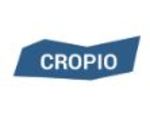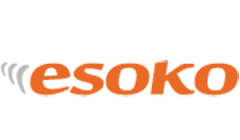Description

FarmERP

Cropio
Comprehensive Overview: FarmERP vs Cropio
FarmERP Overview
a) Primary Functions and Target Markets: FarmERP is a comprehensive farm management software designed to serve the agricultural industry, encompassing a variety of stakeholders including farmers, agribusinesses, cooperatives, and agricultural research institutions. Its primary functions include:
- Farm Management: Crop planning, scheduling, monitoring, and budgeting.
- Financial Management: Handling aspects like accounting, payroll, and financial reporting.
- Supply Chain Management: Managing the logistics and supply chain operations for agro-products.
- Analytics and Reporting: Offering insightful data analytics and customizable reports for strategic decision-making.
- Sustainability and Traceability: Includes modules for tracking sustainability metrics and supply chain traceability.
Target Markets: Large and medium-sized agricultural enterprises looking for detailed and integrated farm management solutions, including emerging markets in countries with developing agricultural sectors.
b) Market Share and User Base: FarmERP, being one of the more established players in the farm management software industry, holds a significant market share, particularly in Asia, the Middle East, and Africa. It’s popular among large agribusiness corporations and is known for its extensive features catering to detailed management processes.
c) Key Differentiating Factors:
- Integration Capabilities: Offers extensive integration features with IoT devices, drones, and various agricultural machinery.
- Customization and Scalability: Highly customizable to meet the needs of different agricultural businesses, and scalable for operations of varying sizes.
- Focus on Sustainability: Strong emphasis on sustainable farming practices and traceability modules that record the complete journey of farm produce.
Cropio Overview
a) Primary Functions and Target Markets: Cropio is another digital agriculture platform with a focus on satellite field monitoring. Its primary functionalities include:
- Remote Sensing and Field Monitoring: Provides satellite imagery and real-time data analytics for crop monitoring and health assessment.
- Resource Management: Tools for optimizing input usage like fertilizers and pesticides.
- Weather Forecasting and Risk Management: Delivers weather forecasts and crop risk assessments via satellite data.
- Field Analytics and Reporting: Offers comprehensive analytics tools for field performance and crop yield predictions.
Target Markets: Predominantly targets large-scale farming operations and agricultural consultants who require detailed satellite data for precision farming.
b) Market Share and User Base: Cropio holds a strong presence in regions with technologically advanced agricultural markets, particularly in Eastern Europe and the United States. Its user base mainly consists of agronomists, farming consultants, and agricultural researchers who leverage precision farming tools.
c) Key Differentiating Factors:
- Satellite and IoT Integration: Excels in integrating satellite technology for real-time field monitoring and analytics.
- Precision Agriculture Focus: Specializes in precision farming techniques, offering detailed data for resource optimization.
- Ease of Use: Known for its user-friendly interface that simplifies the complexities of managing large volumes of satellite data.
Comparison
While both FarmERP and Cropio offer tools for enhancing agricultural productivity, they cater to slightly different aspects of farm management. FarmERP provides a more holistic approach to farm management, encompassing a wide range of business processes and sustainability aspects. It is ideal for organizations looking to integrate various farming operations under one platform.
On the other hand, Cropio focuses primarily on leveraging satellite technology for field monitoring, which is invaluable for precision agriculture. Its strength lies in providing detailed data analytics for optimizing resource allocation and managing crop health.
In terms of market presence, FarmERP might appeal more to traditional markets seeking integrated management solutions, whereas Cropio attracts users looking for advanced precision farming capabilities.
Contact Info

Year founded :
2001
+91 20 2421 6370
Not Available
India
http://www.linkedin.com/company/farmerp-smart-platform

Year founded :
Not Available
Not Available
Not Available
Not Available
Not Available
Feature Similarity Breakdown: FarmERP, Cropio
FarmERP and Cropio are both comprehensive agricultural management solutions designed to improve decision-making, increase productivity, and optimize resource use for agricultural businesses. Here's a breakdown of their feature similarities and differences:
a) Core Features in Common
Both FarmERP and Cropio have a range of core features that cater to the needs of agricultural management. These include:
-
Farm Management: Both offer tools for planning, monitoring, and analyzing farm activities. This includes managing fields, crops, and inputs.
-
Crop Monitoring: They both provide features for tracking crop growth and health, often using satellite or drone imagery to collect data.
-
Weather Forecasting: Each platform provides weather forecasts to help farmers make informed decisions regarding planting, irrigation, and harvesting.
-
Reporting and Analytics: FarmERP and Cropio offer reporting tools to analyze farm data, which assist in improving productivity and profitability.
-
Resource Management: Tools for managing resources such as water, fertilizers, and pesticides are present in both systems.
-
Mobile Access: Both platforms offer mobile applications to access farm data remotely.
b) User Interface Comparison
-
FarmERP: Known for its comprehensive and detailed interface. It provides a wide range of modules that can be customized, catering to different aspects of farm management. While its depth is appreciated by users who need robust features, it may seem overwhelming to smaller farms or beginners.
-
Cropio: Tends to have a more user-friendly and intuitive interface. It emphasizes ease of use, which appeals to users who require quick access to data and straightforward navigation. This can be an advantage for farmers who prioritize simplicity and efficiency in daily use.
c) Unique Features
-
FarmERP:
- Supply Chain Management: FarmERP offers broad supply chain management features, which support traceability and logistics, catering to enterprises needing end-to-end agricultural supply chain solutions.
- Financial Management: It includes features that help manage financial transactions, cost accounting, and budgeting specific to agricultural businesses.
-
Cropio:
- Real-Time Satellite Imagery: Cropio provides advanced real-time satellite monitoring capabilities, which help in immediately assessing crop health and detecting issues.
- AI and Machine Learning Insights: Cropio leverages artificial intelligence for predictive analytics, providing farmers with data-driven insights to optimize crop yields.
In summary, both FarmERP and Cropio are equipped with strong core capabilities for farm management but differ in user interface design and unique feature offerings that may appeal to different types of users based on their specific needs and scale of operations.
Features

Not Available

Not Available
Best Fit Use Cases: FarmERP, Cropio
FarmERP and Cropio are both sophisticated platforms designed to assist in farm management and agribusiness operations. They cater to different needs and use cases depending on the size and nature of the agribusiness. Here's a detailed analysis of their best fit use cases:
FarmERP
a) For what types of businesses or projects is FarmERP the best choice?
Enterprise-Level Agribusinesses: FarmERP is an ideal fit for large agribusinesses and corporate farming operations. The software is robust and scalable, capable of handling complex farming needs across multiple locations and crops.
Diverse Agricultural Operations: It supports end-to-end management of various aspects of farming, including crop planning, financial management, inventory tracking, and supply chain management, making it suitable for businesses with diverse agricultural operations.
Sustainability-Focused Projects: FarmERP offers features for sustainability compliance, organic farming, and precision agriculture, making it suitable for projects focused on sustainable farming practices.
Companies Requiring Extensive Analytics: Organizations that need detailed data analytics and reporting to make data-driven decisions will find FarmERP’s analytics capabilities beneficial.
Integrated Supply Chain Needs: It is a great choice for agribusinesses that require integrated supply chain management from farm to market, offering seamless integration and real-time tracking.
Cropio
b) In what scenarios would Cropio be the preferred option?
Farm Monitoring and Precision Agriculture: Cropio is best suited for farms and agribusinesses that require detailed farm monitoring and precision agriculture tools. It excels at providing satellite monitoring, weather forecasts, field mapping, and soil analysis.
Medium to Large-Scale Farms: While suitable for various farm sizes, Cropio particularly benefits medium to large-scale farms that focus on optimizing productivity and efficiency through technology.
Farms Emphasizing Crop Health Management: With tools designed for monitoring crop health and growth stages, Cropio supports farms aiming to enhance crop management and yield prediction.
Projects Prioritizing Remote Monitoring: For projects where remote monitoring is essential, such as those in geographically dispersed locations, Cropio provides an advantage with its real-time satellite imagery and monitoring capabilities.
Businesses Focused on Reducing Inputs: Organizations aiming to reduce inputs such as water, fertilizers, and pesticides will find Cropio’s analytical tools beneficial in optimizing resource use.
Industry Verticals and Company Sizes
FarmERP:
- Industry Verticals: Agribusinesses, food production companies, and large farming corporations that require comprehensive farm management solutions.
- Company Sizes: Typically medium to large companies due to its comprehensive feature set, which might be more than smaller farms require.
Cropio:
- Industry Verticals: Agricultural sectors focusing on crop production and monitoring; ideal for horticulture, row crops, and agronomy-based sectors.
- Company Sizes: Suitable for a range of company sizes, but particularly beneficial for medium-sized farms and enterprises that can leverage its precision and remote monitoring capabilities.
Both platforms cater to varying aspects of agricultural management, with FarmERP providing a comprehensive, integrated approach suitable for larger, more complex operations, while Cropio offers precision tools and monitoring capabilities tailored to crop-focused farms.
Pricing

Pricing Not Available

Pricing Not Available
Metrics History
Metrics History
Comparing teamSize across companies
Conclusion & Final Verdict: FarmERP vs Cropio
When comparing FarmERP and Cropio, both software solutions offer unique strengths and cater to different agricultural needs. To determine which one offers the best overall value, we must consider their features, usability, scalability, pricing, and user support.
Conclusion and Final Verdict
Overall Value Assessment
FarmERP tends to offer a comprehensive enterprise resource planning system that integrates multiple aspects of agricultural management, making it suitable for larger enterprises looking for an all-in-one solution. Meanwhile, Cropio excels in providing field-level precision agriculture services, which is ideal for organizations focusing on real-time data and satellite monitoring.
Considering all factors, FarmERP offers the best overall value for enterprises needing a holistic, multifunctional platform that can handle diverse agricultural processes. On the other hand, Cropio offers unparalleled value for those who prioritize precise field data and analytics.
Pros and Cons
FarmERP
-
Pros:
- Wide-ranging functionality that supports various agricultural operations (crop management, supply chain, financial management).
- Scalability suited for businesses of different sizes.
- Strong integration capabilities with IoT devices and other software.
- Facilitates decision-making through comprehensive data analytics.
-
Cons:
- May present a steep learning curve due to its extensive features.
- Potentially higher cost because of its broad range of functionalities.
- Less focused on real-time data analytics and precision agriculture compared to Cropio.
Cropio
-
Pros:
- Specializes in precision agriculture with high-quality satellite imagery and real-time analytics.
- Supports intuitive task and operational management through mobile applications.
- Strong emphasis on resource optimization and productivity through accurate field monitoring.
-
Cons:
- Primarily focuses on field-level operations (less comprehensive in handling full-scale enterprise needs).
- Integration with other systems might require additional configuration.
- Lesser emphasis on financial and supply chain management modules.
Recommendations for Users
-
Identify Needs and Scope: Users should first clearly define their business requirements. If looking for a comprehensive solution to manage enterprise-wide operations including finance, supply chain, and production, FarmERP is advisable. If the primary need is for field monitoring and optimizing crop productivity, Cropio should be the choice.
-
Evaluate Scalability and Budget: Consider the size of your operations and budget. FarmERP may involve a higher upfront cost, justified by larger enterprises due to its extensive features. Cropio offers cost-effective solutions for those focused on field data without needing wide-ranging enterprise management functionalities.
-
Testing and Support: Leverage trials or demos to understand user-friendliness and gather insights into the customer support offered by both platforms. Engaging with their helpdesks can clarify company-specific queries which are pivotal in making the final decision.
By closely aligning product offerings with specific agricultural business objectives, choosing between FarmERP and Cropio can become a strategically sound decision.
Add to compare
Add similar companies



